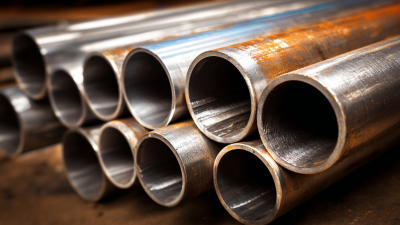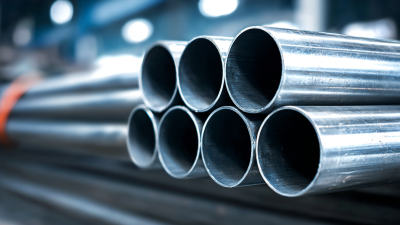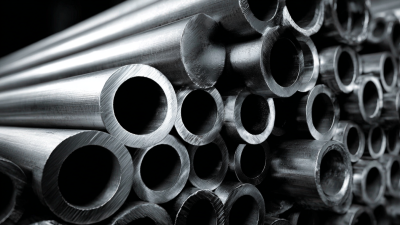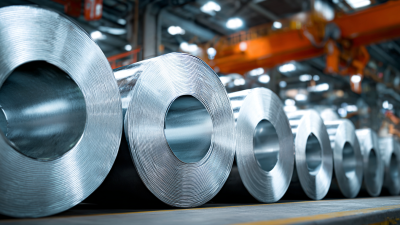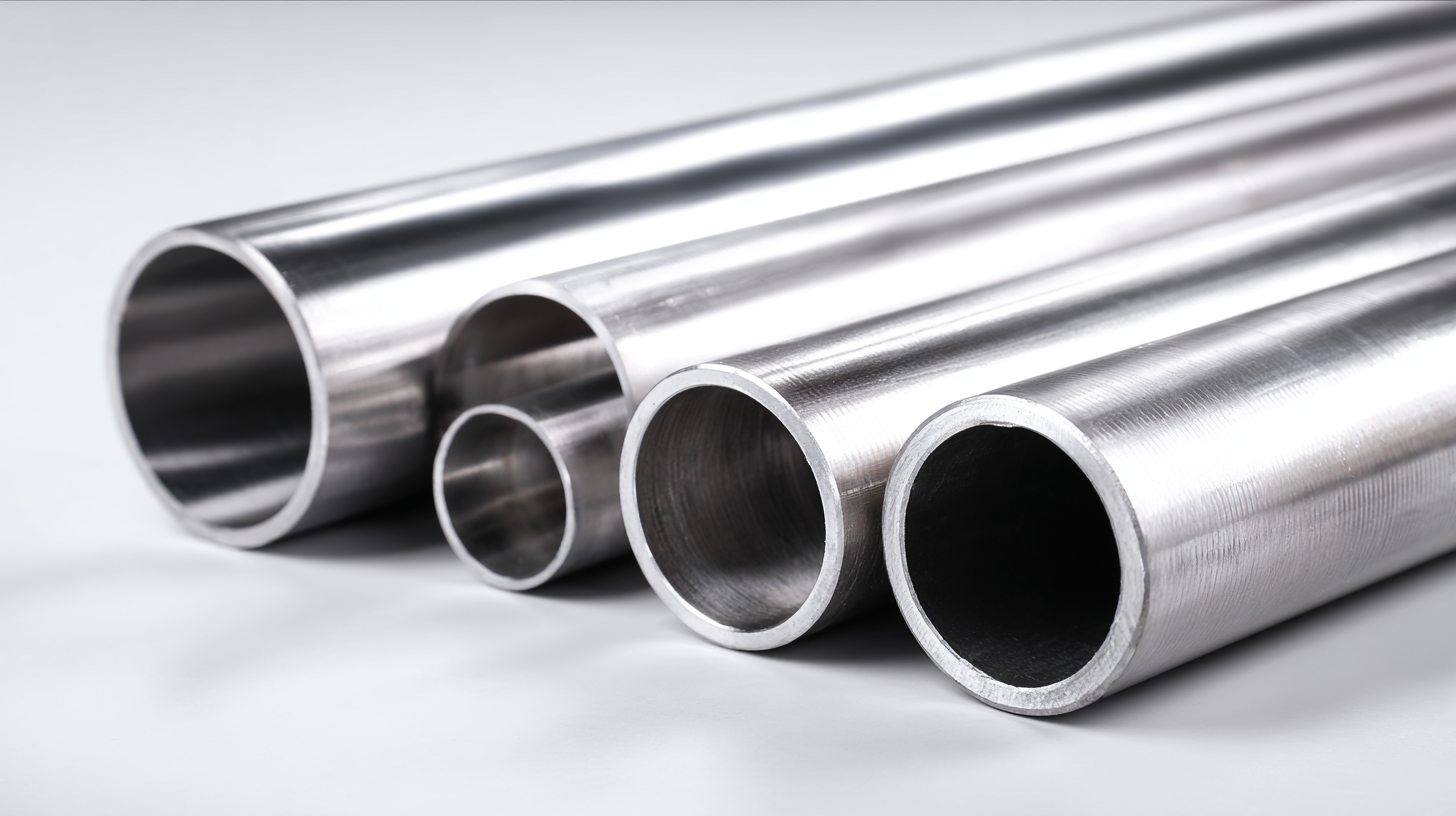 The use of Stainless Steel Pipes in modern industries has become increasingly significant due to their unique properties and versatility. According to a report by Grand View Research, the global stainless steel pipe market was valued at approximately $16 billion in 2020, with a projected compound annual growth rate (CAGR) of 5.4% from 2021 to 2028. The high corrosion resistance, durability, and aesthetic appeal of stainless steel make it an ideal choice for applications across various sectors, including construction, automotive, and oil and gas. These pipes are essential in ensuring the longevity and safety of many industrial systems, effectively transporting fluids and gases while adhering to stringent regulatory standards. As industries continue to prioritize sustainability and efficiency, the relevance of Stainless Steel Pipes is poised to grow, making them a critical component in contemporary infrastructure and manufacturing processes.
The use of Stainless Steel Pipes in modern industries has become increasingly significant due to their unique properties and versatility. According to a report by Grand View Research, the global stainless steel pipe market was valued at approximately $16 billion in 2020, with a projected compound annual growth rate (CAGR) of 5.4% from 2021 to 2028. The high corrosion resistance, durability, and aesthetic appeal of stainless steel make it an ideal choice for applications across various sectors, including construction, automotive, and oil and gas. These pipes are essential in ensuring the longevity and safety of many industrial systems, effectively transporting fluids and gases while adhering to stringent regulatory standards. As industries continue to prioritize sustainability and efficiency, the relevance of Stainless Steel Pipes is poised to grow, making them a critical component in contemporary infrastructure and manufacturing processes.
Stainless steel pipes are increasingly recognized for their exceptional corrosion resistance and longevity, which are crucial attributes in various modern industries. The market for stainless steel seamless pipes is expected to expand from USD 3.37 billion in 2024 to USD 5.15 billion by 2030, reflecting a compound annual growth rate (CAGR) of 5.8%. This growth signals a robust demand for durable materials that can withstand the harsh conditions typically encountered in sectors such as oil and gas, construction, and wastewater management.
Corrosion presents a significant challenge in wastewater systems, where various forms can deteriorate infrastructure over time. Stainless steel pipes, known for their resistance to both general corrosion and localized forms, provide an attractive solution. By selecting the right protective coatings in conjunction with stainless steel’s inherent properties, industries can enhance the longevity of their pipelines. With ongoing advancements in material science and coatings technology, the application of stainless steel pipes is set to play a vital role in extending the lifespan of pipeline infrastructure, ensuring efficient and reliable operation in critical industry sectors.
| Dimension | Material Grade | Corrosion Resistance Rating | Lifetime Expectancy (Years) | Common Applications |
|---|---|---|---|---|
| 1/2 inch | 304 | Good | 15-20 | Food Processing, Chemical Industries |
| 3/4 inch | 316 | Excellent | 20-25 | Marine Applications, Pharmaceutical |
| 1 inch | 321 | Very Good | 25-30 | Aerospace, High-Temperature Equipment |
| 2 inch | 430 | Fair | 10-15 | Automotive, Kitchenware |
The oil and gas industry significantly benefits from the utilization of stainless steel pipes, which are prized for their exceptional resistance to corrosion and high-pressure environments. These characteristics make stainless steel seamless pipes ideal for applications such as transporting oil and natural gas, where durability and safety are paramount. As industry demands continue to grow, the stainless steel seamless pipes market is projected to reach USD 5.15 billion by 2030, underscoring the importance of these materials in modern industrial practices.
Tips for selecting stainless steel pipes include considering the specific environmental conditions they will face, such as temperature extremes and potential exposure to corrosive substances. Additionally, engaging with suppliers who specialize in high-quality stainless steel products can ensure that you obtain pipes that meet stringent industry standards. Regular maintenance and inspections can also help prolong the longevity and effectiveness of these pipes in the field.
As technological advancements continue to reshape the oil and gas sector, the demand for high-performance materials like stainless steel is expected to rise, propelling further innovations and applications across the industry. Engaging in thorough research and understanding the market dynamics will play a crucial role in leveraging the benefits of stainless steel pipes effectively.
Stainless steel pipes play a crucial role in the food and beverage sector, primarily due to their impressive hygienic properties and durability. As hygiene standards become progressively stringent, manufacturers are compelled to adapt their processes, making stainless steel the material of choice. Its non-reactive nature helps in preventing contamination, ensuring that food products remain safe and maintain their quality throughout processing and storage.
In modern food production, utilizing food-grade stainless steel pipes not only meets regulatory requirements but also enhances operational efficiency. These pipes resist corrosion and are easy to clean, contributing significantly to a cleaner production environment. Additionally, the seamless design of some stainless steel pipes helps minimize the risk of bacteria buildup, making it a critical component for maintaining food safety.
**Tips:** When selecting stainless steel pipes for food applications, consider investing in products compliant with relevant food safety standards. Regular maintenance and cleaning protocols should be established to ensure the longevity and hygienic quality of the piping system. It's also wise to stay updated with technological advancements in pipe manufacturing that can further improve hygiene and efficiency.
Stainless steel pipes have gained notable traction in modern construction projects due to their economic advantages. One of the primary benefits is their durability, which reduces the need for frequent replacements and maintenance. Unlike traditional materials, stainless steel resists corrosion, ensuring longevity and reliability, which ultimately translates to cost savings over time. Furthermore, the lower lifecycle costs associated with stainless steel make it an attractive choice for builders looking to maximize their return on investment.
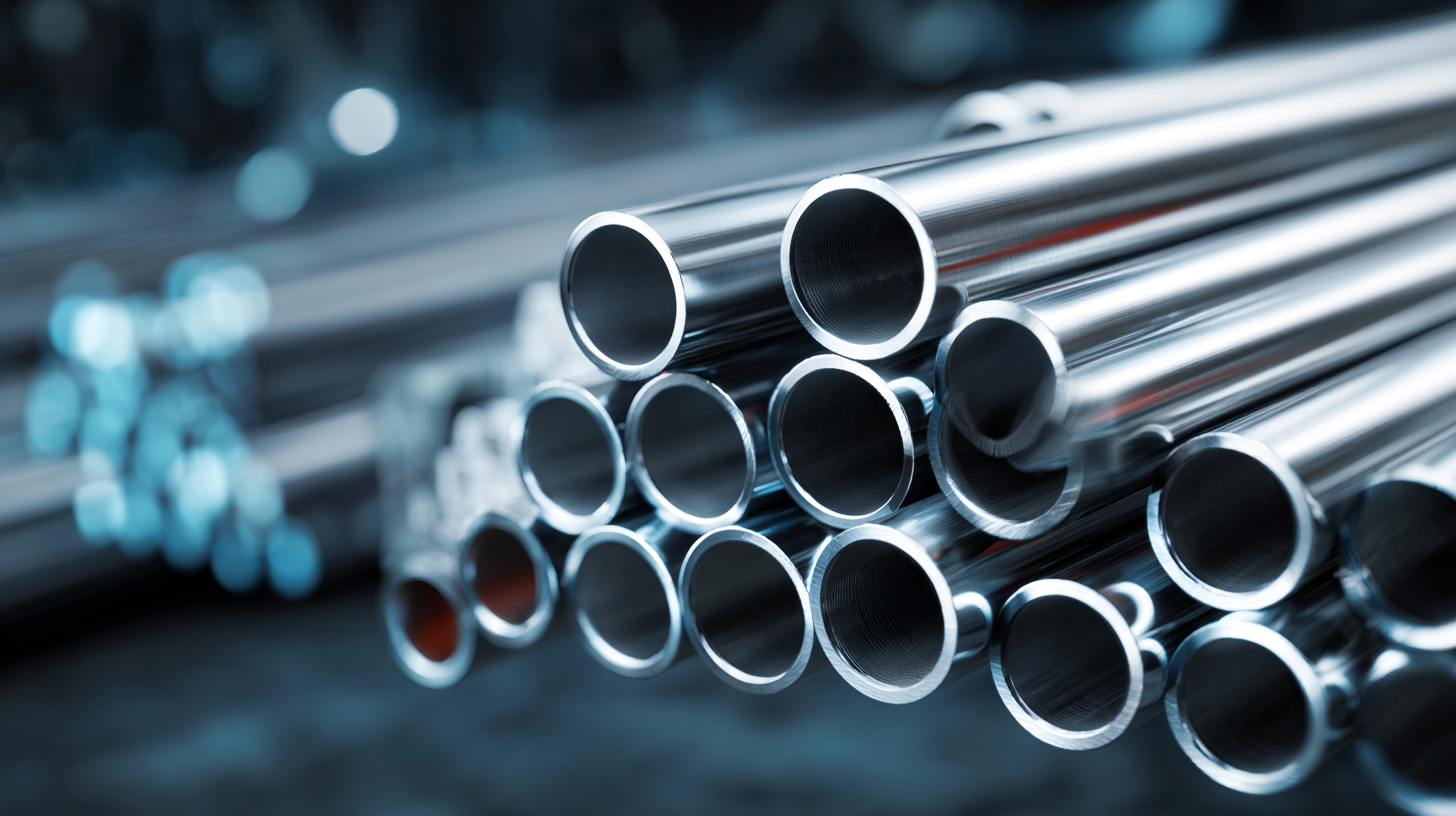 Tip: When selecting materials for construction, consider the total cost of ownership. While the initial investment in stainless steel pipes might be higher, their long-term benefits can outweigh initial expenses.
Tip: When selecting materials for construction, consider the total cost of ownership. While the initial investment in stainless steel pipes might be higher, their long-term benefits can outweigh initial expenses.
In addition to their durability, stainless steel pipes are also lightweight and easy to install, which can significantly reduce labor costs. Their versatility enables them to be used in various applications, from plumbing to structural support, providing a flexible solution for different project requirements. By implementing stainless steel pipes in construction, companies can enhance their operational efficiency while minimizing the environmental impact, as steel is 100% recyclable.
Tip: Always investigate local suppliers of stainless steel to find competitive pricing and support sustainable sourcing practices for your projects.
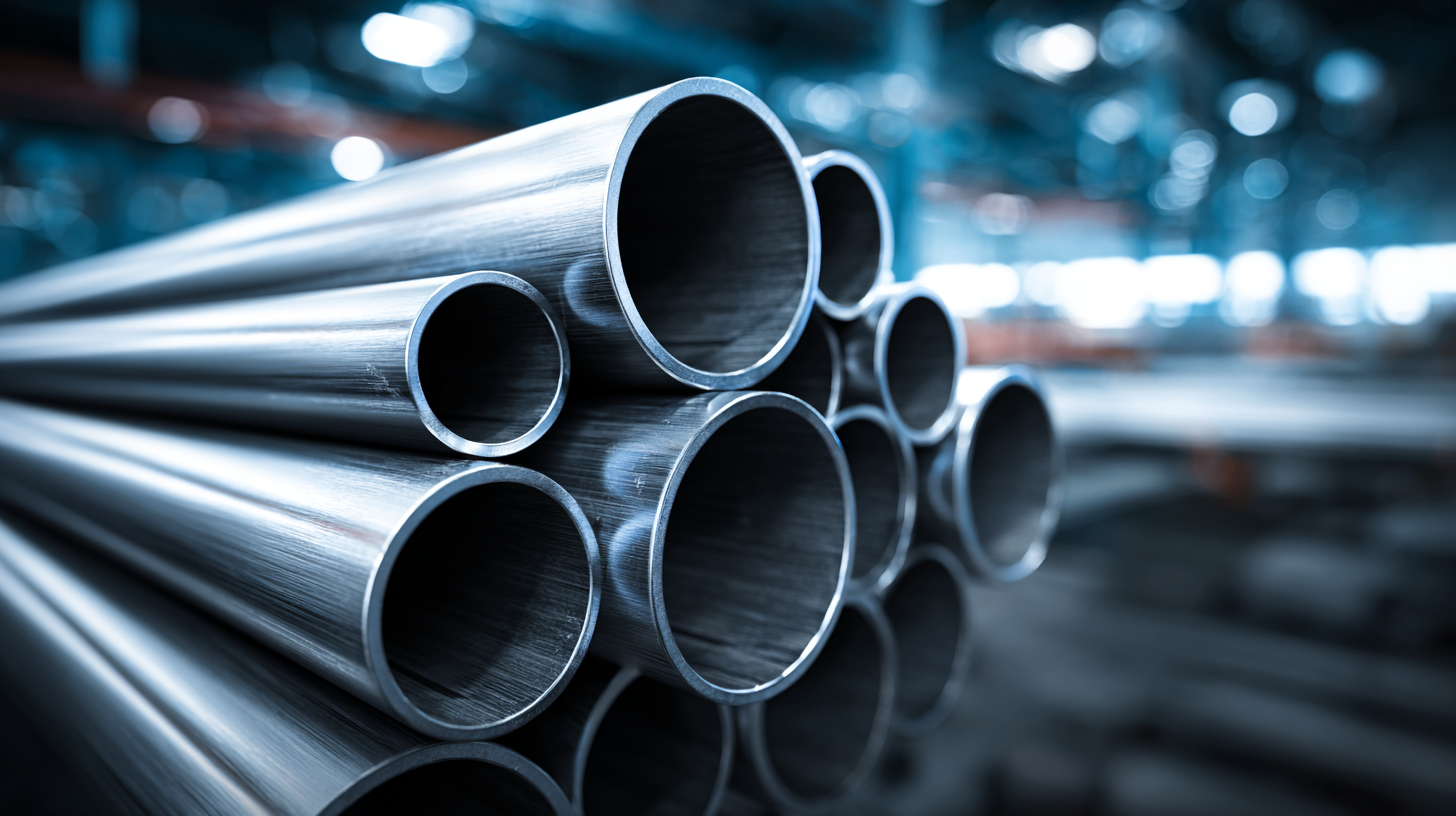 Stainless steel pipes have emerged as a vital component in numerous innovative technologies across various industries. Their resistance to corrosion and high durability makes them suitable for applications in sectors like pharmaceuticals, food processing, and renewable energy. In the realm of pharmaceuticals, stainless steel pipes are essential for clean and sanitary environments, ensuring that product integrity and safety standards are met. These pipes facilitate the smooth transportation of liquids while minimizing contamination risks.
Stainless steel pipes have emerged as a vital component in numerous innovative technologies across various industries. Their resistance to corrosion and high durability makes them suitable for applications in sectors like pharmaceuticals, food processing, and renewable energy. In the realm of pharmaceuticals, stainless steel pipes are essential for clean and sanitary environments, ensuring that product integrity and safety standards are met. These pipes facilitate the smooth transportation of liquids while minimizing contamination risks.
Moreover, in the renewable energy sector, stainless steel pipes play a crucial role in the development of solar thermal systems and wind power installations. Their ability to withstand extreme temperatures and pressures enhances the efficiency and lifespan of energy systems. In solar energy applications, stainless steel pipes are used in heat exchangers, enabling optimal heat transfer and energy efficiency. Meanwhile, in wind energy, these pipes aid in constructing robust structures, providing essential support and safety for wind turbines. The versatility and strength of stainless steel pipes continue to drive their adoption in emerging technologies, paving the way for more sustainable and innovative industrial practices.
